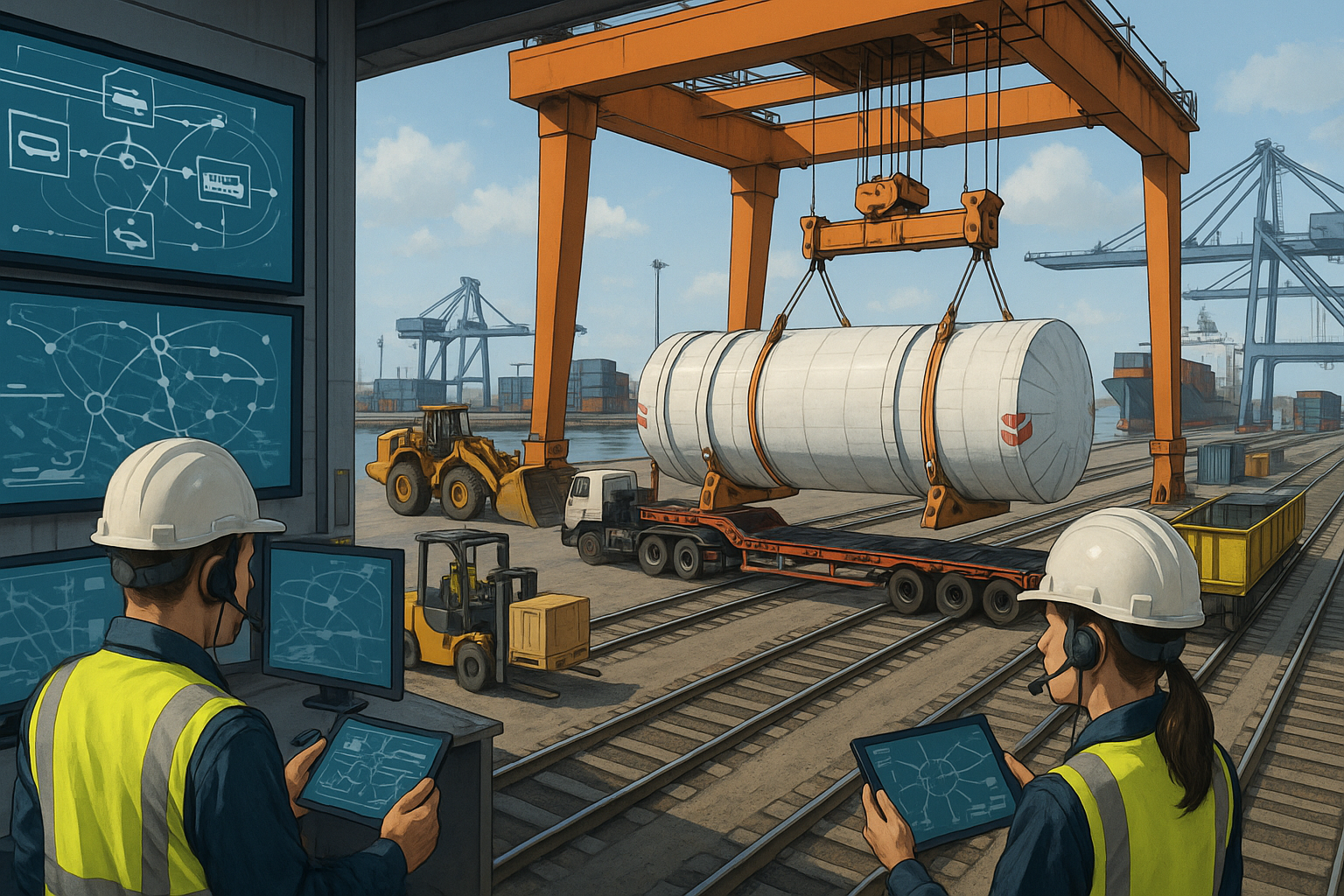When it comes to freight oversize load logistics, the real challenge isn’t just getting the proper permits—it’s syncing these massive, non-standard shipments with the pace and complexity of today’s global supply chains. While most freight systems are built around standardized containers and tight intermodal transitions, dimensional cargo refuses to conform to these rules. That’s why successful freight oversize load integration demands a whole new level of supply chain strategy, one that merges permitting, timing, mode-switching, and real-time coordination across a vast web of vendors and infrastructure realities.
This is where Reliable Permit Solutions steps in—not just as a permit provider but as a strategic partner in the orchestration of full-spectrum logistics for freight oversize load operations. Their expertise goes beyond regulatory navigation—they understand the granular complexities of integrating oversize freight into rail, maritime, air, and over-the-road transport modes. It’s about coordination, not just compliance.
Integrating the Impossible: Why Freight Oversize Load Demands a Unique Supply Chain Blueprint
Freight oversize load logistics operate in a completely different league compared to standard freight. You’re dealing with dimensional constraints, route limitations, equipment availability, and local ordinances in over 2,500 jurisdictions. When these factors intersect with multi-modal networks, everything from warehouse design to delivery scheduling must adapt.
In this context, supply chain integration for oversize freight becomes more than a best practice—it’s a business necessity. And it starts with aligning transport modes. You can’t just swap a truck for a train or barge mid-transit; freight oversize load operations require meticulous modal transitions, sometimes involving custom cradles, pilot vehicles, and specialized offloading gear. Each leg of the journey must be mapped with surgical precision, taking into account bridge heights, axle loads, port clearances, and more.
Designing Warehouses for the Outliers
Traditional warehouses are optimized for palletized, modular freight. But dimensional cargo needs breathing room. Warehouse design for freight oversize load must accommodate unique access points, reinforced flooring, and adaptable racking systems. It’s not just about storage—it’s about flow. How does a wind turbine blade move through your cross-dock? Can your layout handle a vertical exit strategy?
Inventory Management That’s Anything But Standard
Storing and managing dimensional cargo is like playing Tetris with pieces that don’t fit. Traditional ERP systems struggle to track non-conforming SKUs, so custom fields, dynamic lot tracking, and AI-driven spatial planning are now essential tools. Inventory management for freight oversize load isn’t just about location—it’s about readiness and rapid mobilization.
Adapting the Distribution Network: A Game of Infrastructure Chess
Optimizing a distribution network for oversize freight means understanding which facilities, roads, and regions can actually accommodate the load—both physically and legally. Your ideal DC might be located in a permit-restricted zone. You may need to redesign your hub-and-spoke strategy entirely to accommodate just one critical freight oversize load lane.
Smart Tech for Smart Loads
Modern logistics demands digital visibility, and that’s doubly true for oversize freight. RFID won’t cut it—you need integrated TMS platforms that sync permit data, GPS tracking, traffic pattern predictions, and even weather forecasting. Technology integration for freight oversize load is where the next wave of competitive advantage lives.
Scheduling Without Bottlenecks
In standard logistics, a missed window is an inconvenience. In freight oversize load operations, it’s a deal-breaker. Road closures, curfews, and time-sensitive pilot car contracts mean your schedule must be razor-sharp. And that schedule must integrate cleanly with the broader supply chain’s rhythms.
Managing the Cost Without Breaking the System
Dimensional cargo isn’t cheap—but it doesn’t have to break your budget. With smart cost allocation frameworks, companies can absorb freight oversize load expenses into broader supply chain budgets using blended metrics and flexible billing strategies.
Risk and Resilience in a Fragile Web
Each added variable multiplies the risk. That’s why freight oversize load logistics require embedded risk management protocols—from alternate routing to cargo insurance optimization. The goal is clear: move with confidence, no matter what the network throws your way.
Measuring What Matters
Key performance indicators (KPIs) for freight oversize load integration aren’t the same as standard freight. You’ll need metrics that capture route efficiency, permit turnaround time, mode-switch success rates, and compliance incident frequency—all of which Reliable Permit Solutions supports with data-driven insights.
A Partner Who Gets the Big Picture
At the end of the day, Reliable Permit Solutions isn’t just helping you get from A to B—they’re helping you design supply chains that are future-proof. As demand for dimensional cargo continues to rise across energy, infrastructure, and defense sectors, your logistics systems need to be ready now—not later.
Reliable Permit Solutions delivers more than just permits—they enable full operational integration of freight oversize load transport into the broader supply chain ecosystem. That’s how you win in the modern logistics game.

